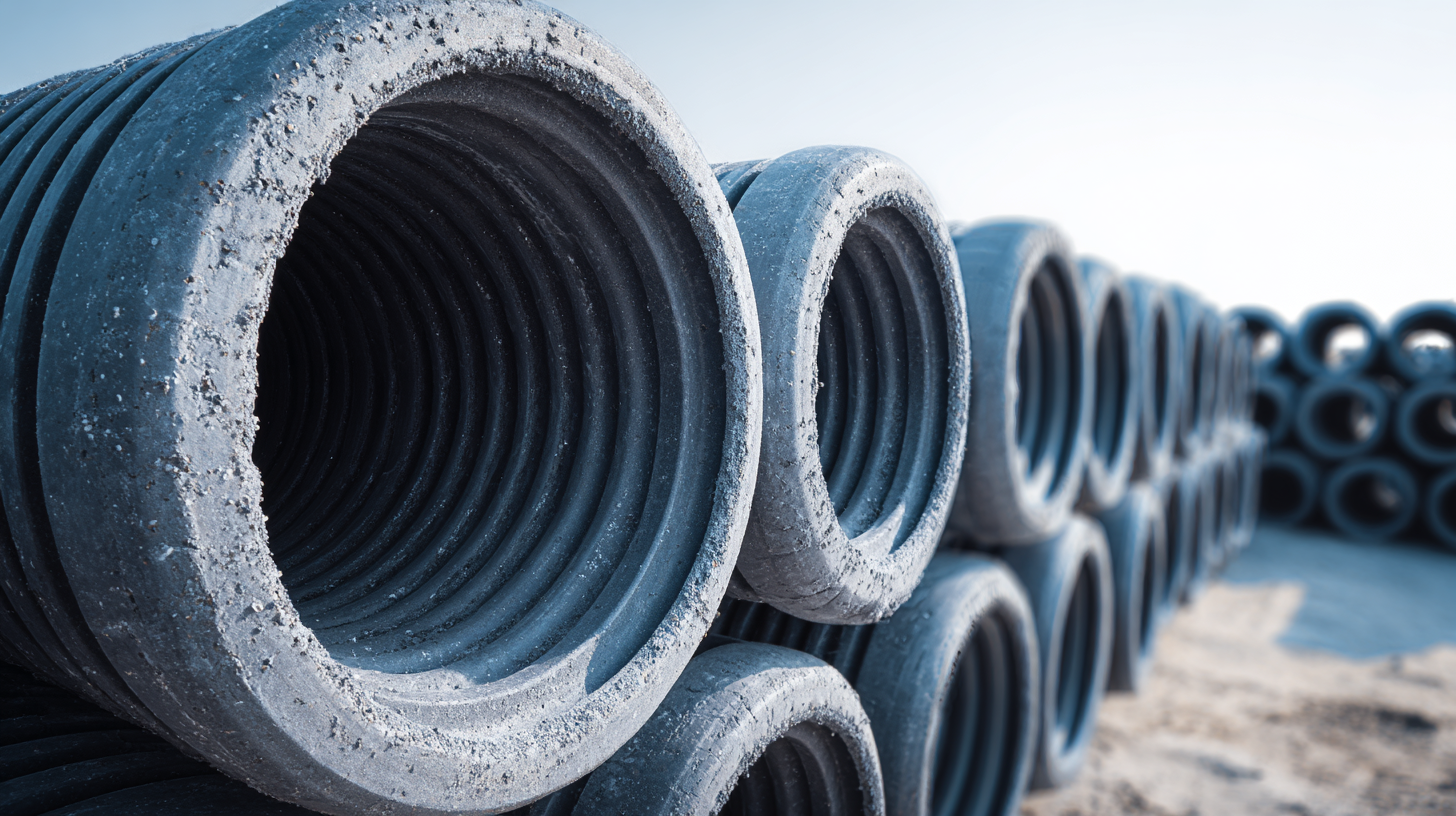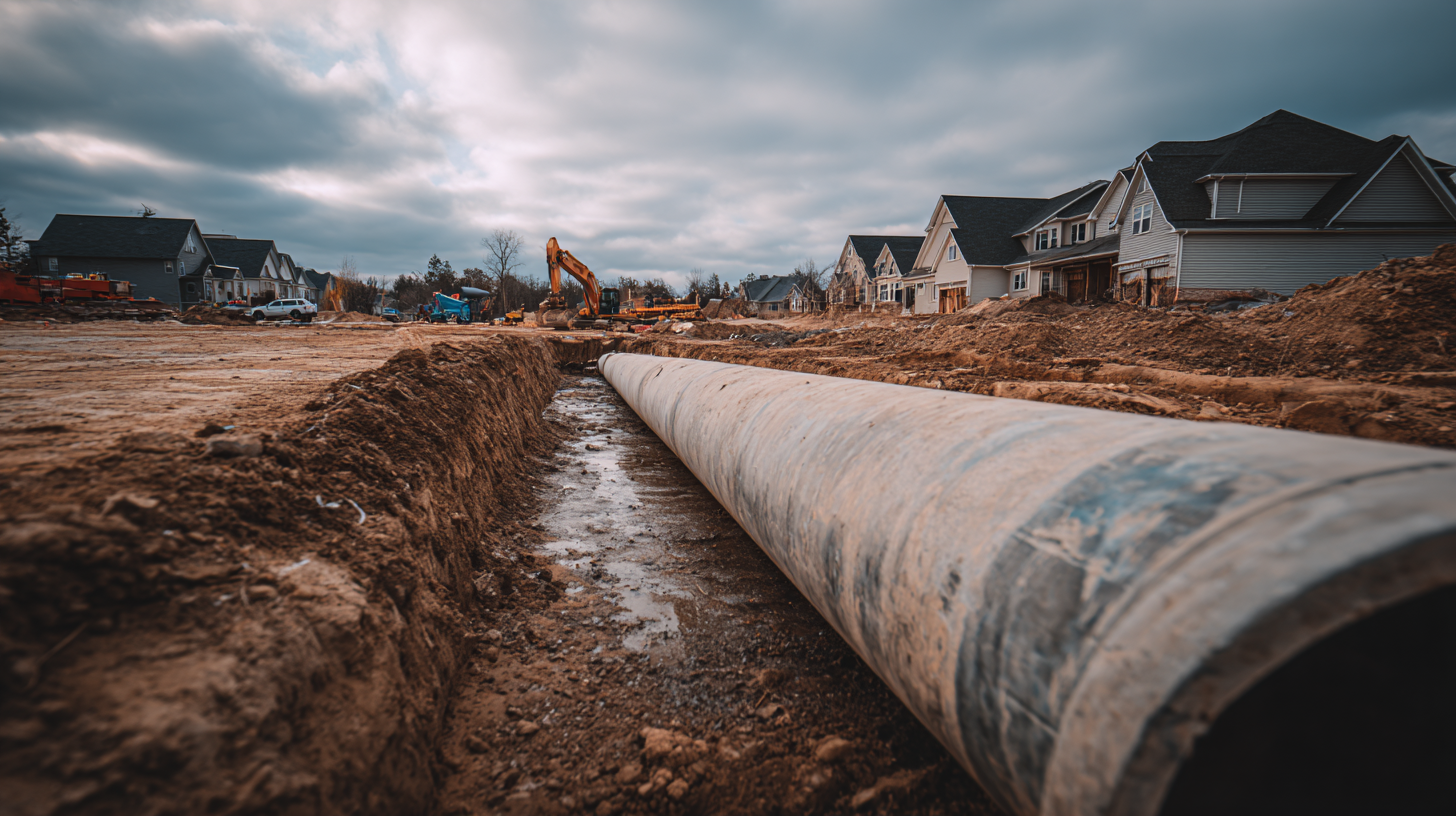As we step into 2025, the landscape of drainage solutions continues to evolve, with drain tile pipes standing at the forefront of innovation and practicality. According to recent industry reports, the market for drain tile systems is projected to increase by 8.5% annually, driven by rising demand for effective water management solutions amidst changing climate patterns. Key advancements in materials and installation techniques are enabling greater efficiency and longevity in these systems.

For homeowners, contractors, and agricultural professionals alike, understanding the nuances of drain tile pipe options is essential for making informed decisions that can significantly enhance property value and agricultural productivity. This guide aims to navigate the complexities of selecting the best drain tile pipe for your specific needs, ensuring optimal performance and sustainability for the years to come.
When it comes to selecting the right drain tile pipe, understanding the different types available is crucial for effective drainage solutions.
The two primary materials used for drain tile pipes are PVC (polyvinyl chloride) and corrugated plastic. PVC pipes are sturdy and resistant to chemicals, making them a popular choice for long-term installations. They are excellent for main drainage systems, especially in areas with high water tables. In contrast, corrugated plastic pipes are lightweight and flexible, allowing for easier installation in various soil conditions. These pipes are typically used for residential projects, providing a cost-effective solution for managing water drainage.
Tip: When choosing between PVC and corrugated pipes, consider the specific drainage requirements of your property, such as soil type, water flow, and installation ease. Another important factor is the pipe diameter. Larger diameters can handle more water but may come with higher costs. Ensure you assess your drainage needs thoroughly before making a purchase to avoid future headaches.
Additionally, don’t forget to evaluate the accessories that will complement your drain tile system, such as connectors, fittings, and gravel backfill. These components play a vital role in the overall performance of your drainage system. Properly sealing joints and ensuring adequate gravel can improve flow efficiency and prevent blockages over time.
When selecting the best drain tile pipe for your needs, there are several key factors that you should consider. Firstly, material choice plays a crucial role in the longevity and performance of drain tile systems. High-density polyethylene (HDPE) pipes are gaining popularity due to their resistance to corrosion and flexible installation options. According to a 2022 industry report by the American Society of Civil Engineers, HDPE pipes can last over 100 years with proper installation, significantly reducing the need for replacements.
Another important factor is the pipe diameter and spacing. A study published in the Journal of Agricultural Engineering found that systems with a larger diameter (typically 4 inches) are more efficient in handling water flow, particularly in areas with high rainfall. Moreover, the installation spacing of the pipes should be tailored to the soil type; for instance, tighter spacing is recommended for clay soils to ensure adequate drainage. The balance between these variables can greatly impact the performance and effectiveness of your drainage system, ultimately influencing the health of your landscape and property.

When selecting the best drain tile pipe for your needs, one of the most crucial factors to consider is the material. The three main types—PVC, corrugated, and polyethylene (PE)—each have their unique advantages and limitations. PVC pipe, known for its rigidity and durability, typically offers superior longevity and a smooth interior that minimizes resistance to flow. Industry reports suggest that PVC can last over 100 years under proper conditions, making it a popular choice for long-term drainage solutions.
On the other hand, corrugated pipes, often made of HDPE (high-density polyethylene), provide excellent flexibility and ease of installation, particularly in environments with uneven soil conditions. According to the Plastic Pipe Institute, HDPE offers resistance to a range of chemicals and can endure extreme temperatures, making it suitable for diverse applications. However, while corrugated pipes are typically more cost-effective, their lifespan, estimated around 50 years, might be a drawback for those seeking a permanent installation.
Ultimately, the choice of material will depend on specific project requirements, including soil conditions, budget constraints, and long-term performance expectations. Each material has its strengths, making it essential to evaluate all options before making a decision.
When it comes to installing drain tile pipes, understanding the right techniques is essential for optimal performance. First and foremost, proper excavation is crucial. Ensure you dig a trench that's at least two feet deep and wide enough to accommodate the pipe and surrounding gravel. This not only allows for adequate drainage but also prevents any potential blockages from soil and sediment. It's advisable to use a laser level to maintain a consistent slope of at least 1% to encourage effective water flow towards the drainage outlet.
Next, the selection of materials plays a significant role in the success of your drain tile system. Use perforated PVC or corrugated pipe to facilitate 360-degree drainage, and consider wrapping the pipe in landscape fabric. This will prevent soil infiltrating the pipe, thus maintaining the pipe’s integrity over time.
Once the pipe is laid, backfill the trench with clean gravel to a depth of about six inches above the pipe. This gravel layer provides additional filtration and eases water movement into the tiles, optimizing your drainage system's efficiency. By adhering to these installation techniques, you can significantly enhance the longevity and effectiveness of your drain tile system.
When it comes to maintaining your drain tile system, there are several essential tips to ensure its longevity and effectiveness. First, regular inspections are crucial. Check for any visible damage, blockages, or signs of settling that could affect the drainage efficiency. By catching issues early, you can prevent more significant problems down the line.

Another proactive measure is to keep the surrounding landscape well-drained. Ensure that any water runoff from roofs or driveways directs away from your drain tile system. Adding vegetation can help absorb excess water and reduce erosion around your tiles, safeguarding their functionality.
Lastly, consider implementing drainage water recycling practices. Capturing and reusing drainage water not only improves crop yields but also enhances water quality. This eco-friendly approach can extend the life of your drainage systems by reducing wear and tear, ensuring they remain a reliable asset for years to come.
